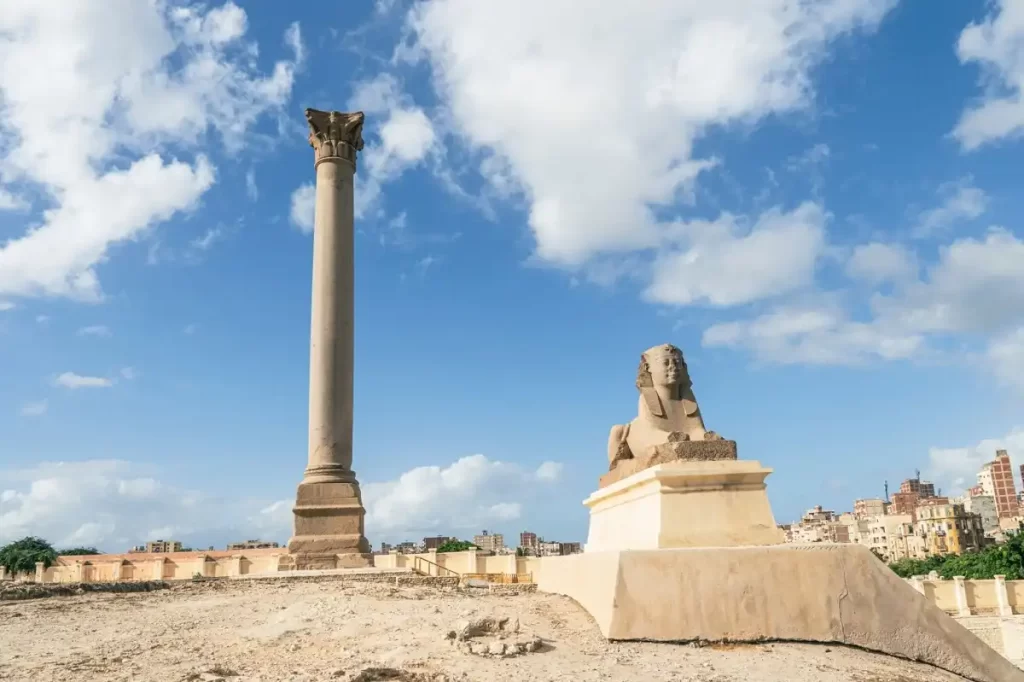
Pompey's Pillar
[ez-toc]
The largest memorial column in Egypt, known as “Pompey’s Pillar,” is located on a rocky mountaintop in the heart of Alexandria. It is renowned for being one of the largest monolithic columns ever built and the only free-standing column known to have existed in Roman Egypt. The pillar is made of solid red granite and measures 28 meters high and 2.7 meters broad. On its western upper side is a Greek inscription honoring Emperor Diocletian.
Pompey’s Pillar History
Diocletian, the Roman emperor, built this column between 284 and 305 AD to honor his victory in quelling the populace’s uprising against Roman rule, saving Alexandrians from starvation, and exempting the populace from paying taxes. This memorial column was built as a sign of appreciation for what Diocletian accomplished during these trying times. The pillar earned the moniker “Pompey’s Pillar” because, throughout the Middle Ages, crusaders believed, wrongly, that the great Roman leader Pompey’s remains were kept in a jar at the very top of the pillar.
Many people have stayed behind to witness the conflicts of the past play out in front of the pillar’s eyes. The Serapeum, a representation of ancient tradition, served as the patron deity of Alexandria during the first centuries, and his temple was close to the pillar. It was also a time of religious strife as Christianity’s ideas gained popularity, which resulted in the destruction of numerous pagan temples and statues of the god Serapis that date back to Ptolemy II and Ptolemy III’s rule in 391 AD.



